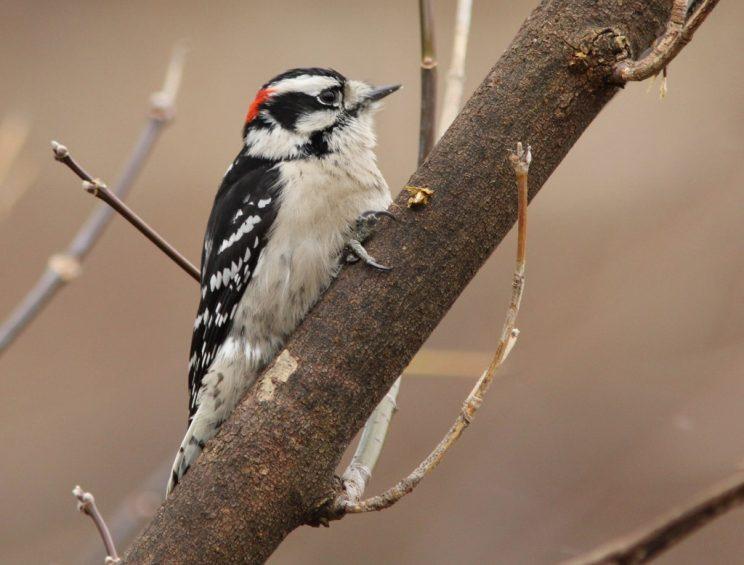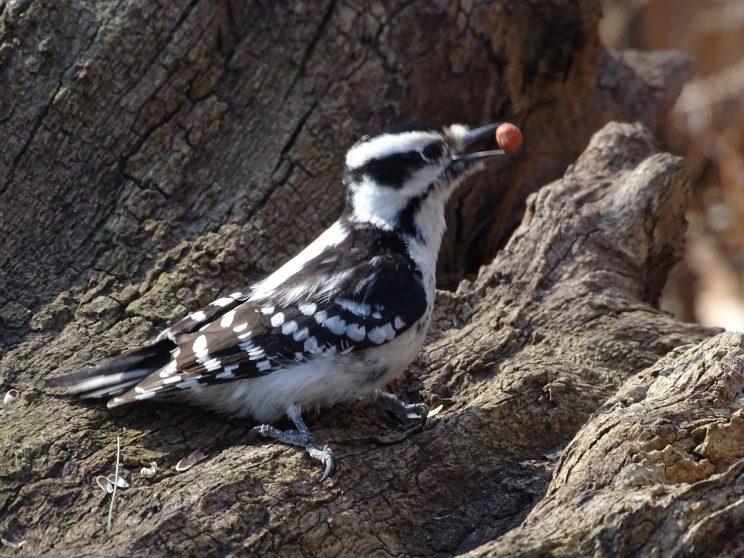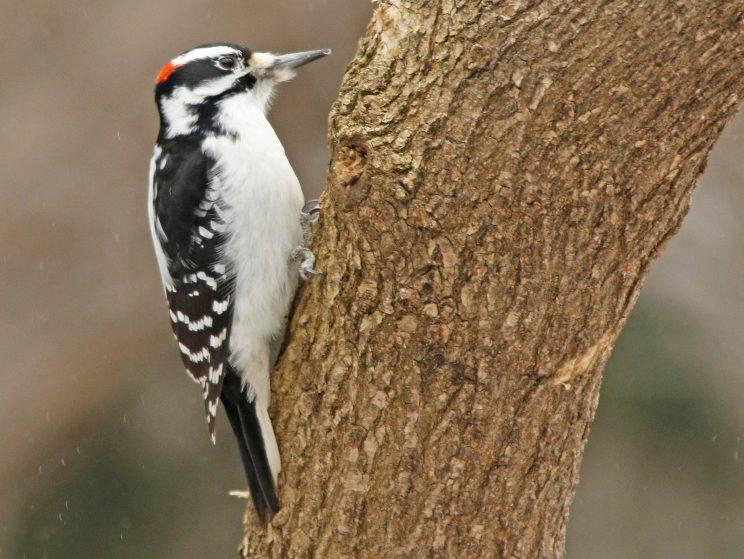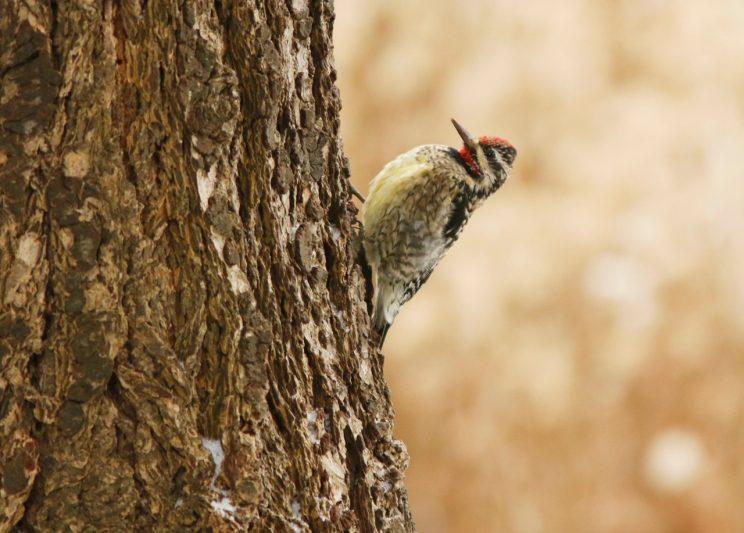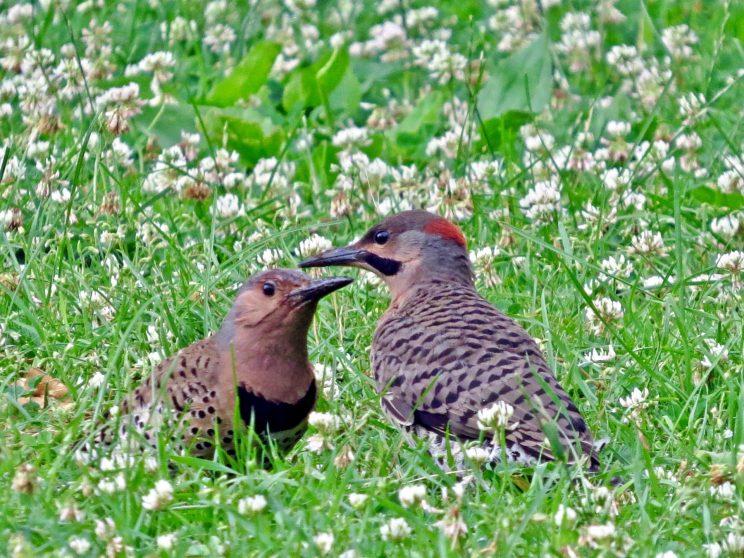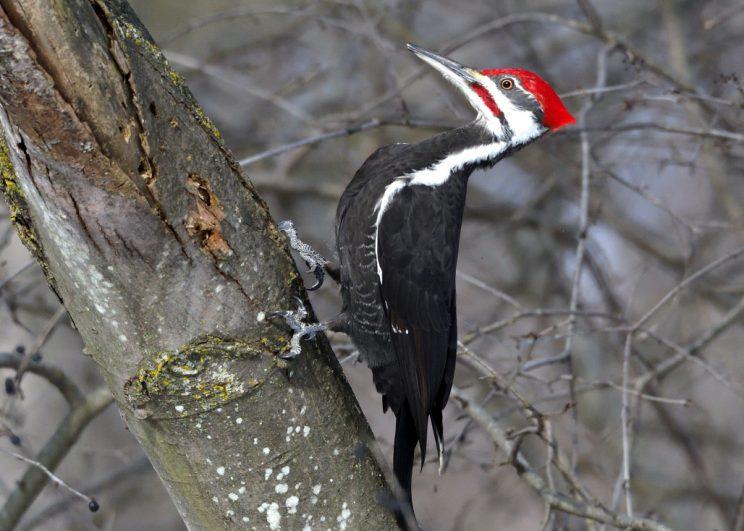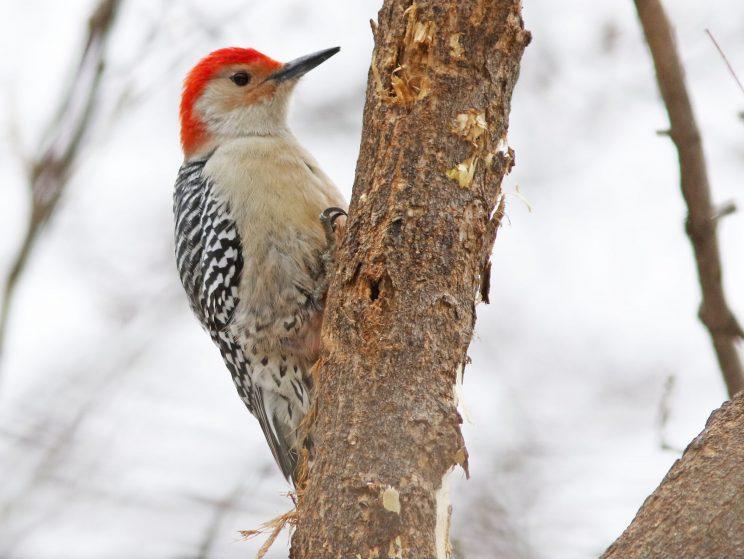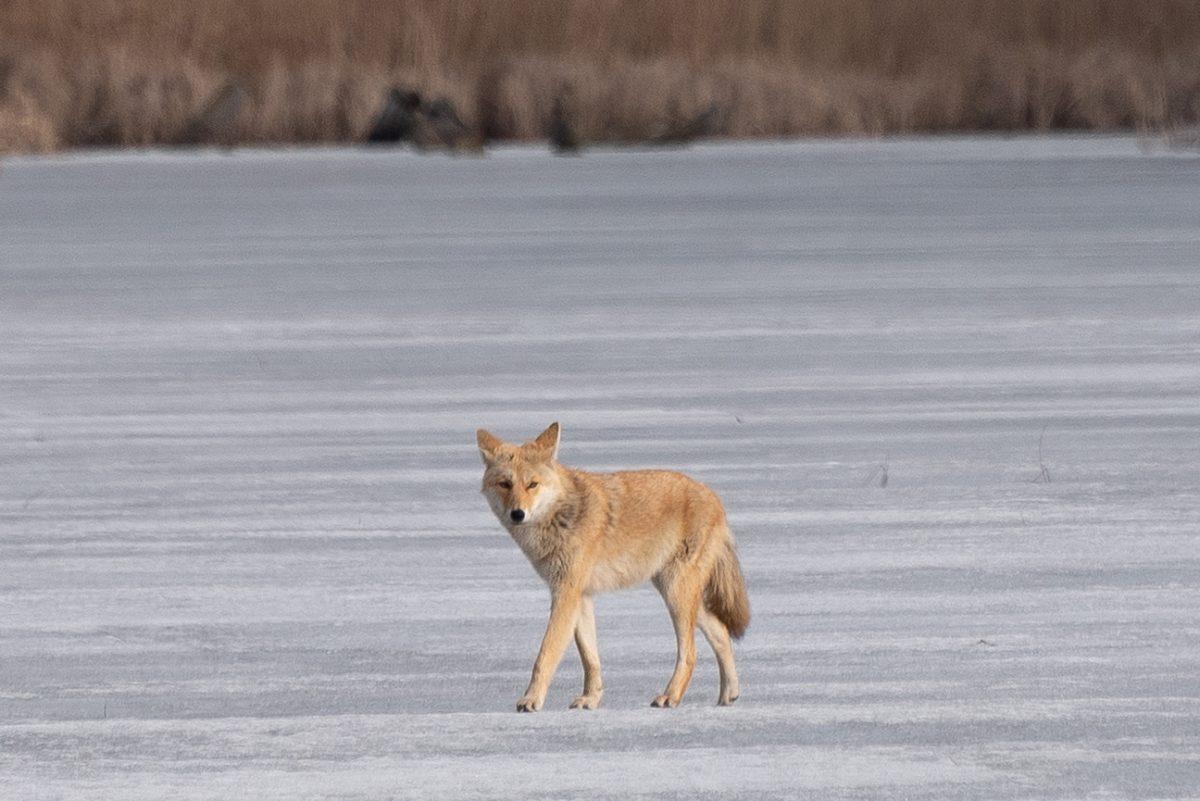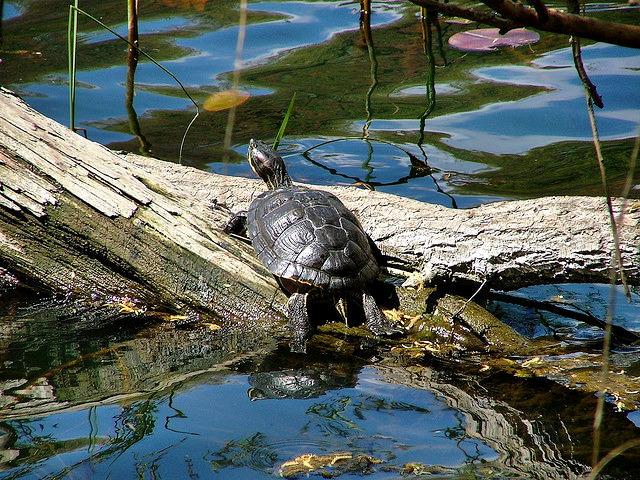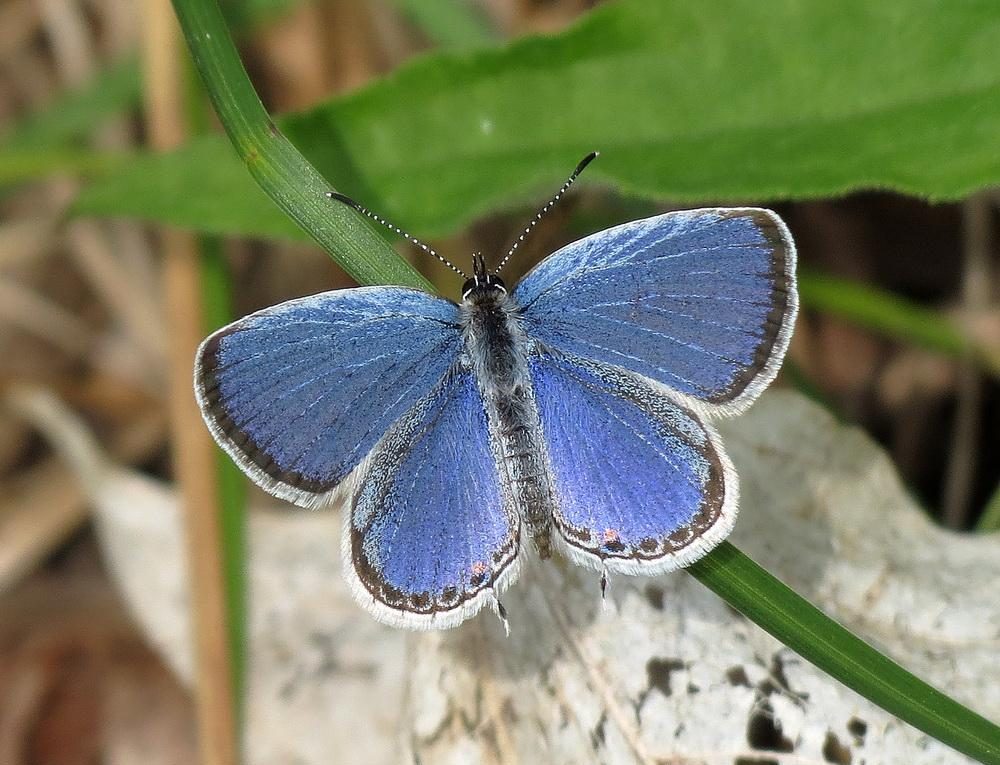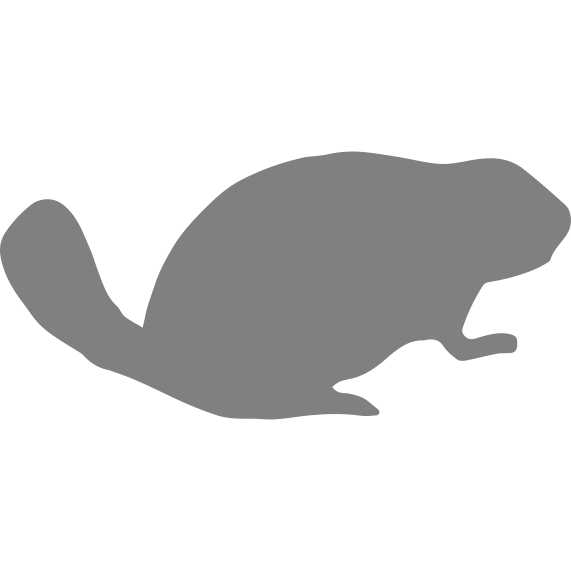With all the mature trees in High Park, it's no wonder that woodpeckers find it appealing. The similar-looking Downy and Hairy Woodpeckers live in the park year-round (Hairy is the bigger one). Northern Flickers breed in the park but leave for the winter. Yellow-bellied Sapsuckers can be seen during migration. Red-bellied Woodpecker has become a regular breeder in recent years, while the striking Pileated Woodpecker is occasionally seen in winter.
Red-bellied Woodpecker
by Haya Aldoori (this article first appeared in the High Park Nature Centre blog on January 2, 2019)
It is a beautiful cool winter day in High Park. As you walk through the trails, the bare tree branches are covered in a white blanket of snow. You slowly look up at the trees, following the line that is the trunk and suddenly, some bright red feathers draw your eyes in. You then start to notice that there is a white and black body, with an almost zebra-like pattern, moving around. You know that this bird is a woodpecker but it doesn’t quite look like the others you have seen so far. This woodpecker is a Red-bellied woodpecker! These birds are so fun to observe in the wild, spontaneously flying and dodging among trees and shrubs, as if they were evading predators (sometimes they might be). When they are foraging, Red-bellied Woodpeckers will peck on tree trunks and major limbs in search of insects. They will also climb and perch among branches to pick berries and nuts, and can sometimes even catch flying insects in the air. However, in the winter they will mostly eat the nuts and seeds that they had stored in bark crevices during the fall.
FUN FACT: Red-bellied Woodpeckers are attracted to noises that resonate. In the city, the male can be found tapping loudly on metal gutters, aluminum roofs, and even vehicles to attract a mate.
Keep and eye out for Red-bellied Woodpeckers in High Park in the winter!

